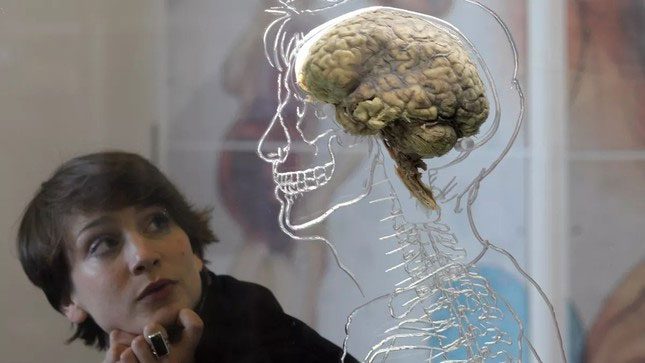In 1936, American writer Lowell Thomas wrote in the introduction to Dale Carnegie’s book “How to Win Friends and Influence People” that later became a frequently repeated statement: “Professor William James of Harvard once said that an average person only develops 10% of their potential intellectual ability.”
Since then, some have also claimed that humans only use 10% of their brains. But is this true?

How much of our brains do we use every day? (Photo: Matt Cardy / Stringer via Getty Images).
Just a Myth?
While it remains uncertain whether James, considered the father of American psychology, was the originator of this claim, it is certainly not true. Instead, “we are always using our entire brain,” says Erin Hecht, an assistant professor of evolutionary neuroscience at Harvard University.
Julie Fratantoni, a cognitive neuroscientist and head of the BrainHealth Project at the University of Texas at Dallas, states: “It’s just a funny myth. Is it 10% of energy metabolism? Is it 10% of electrical activity? Is it blood oxygen levels?”… This myth is so widespread that students always ask about it.
Hecht adds: “In my class, whenever someone brings up that ridiculous story, I say, ‘If you only use 10% of your brain, you might need a respirator.’
Hecht compares brain activity to the heart when the body is at rest. The heart continues to pump even when it is not working at full capacity. Similarly, the entire brain and its cells, known as neurons, are always active, even if only at a basic level.
Hecht explains: “Neurons must operate at some basic level to keep them healthy.”
According to Fratantoni and Hecht, while the brain is categorized into distinct areas, it functions through various networks. No single area ever works in isolation.
How Does the Brain Function?
How do we know which part of the brain is active? The best tool we have to measure brain activity is functional magnetic resonance imaging (fMRI).
This neuroimaging technique requires someone to lie inside a tube scanner while responding to different stimuli. The scanner measures changes in blood flow in the brain, indicating increased energy use in different regions.
Hecht states: “The idea is that the parts of the brain that receive more blood will burn more energy and thus be more involved in whatever you are thinking functionally.”
Our brains recruit fewer resources for skills we know well. As we practice a skill, our brains change in observable ways. First, the brain tissue associated with those skill areas physically expands, according to Hecht.
Hecht suggests that researchers hypothesize that this growth may come from neurons branching out to connect with neighboring neurons, or from increased blood vessels facilitating greater blood flow.
At the same time, the more the brain practices a skill, the more efficiently it operates and the less energy it requires.
Hecht says: “As you become more proficient at something you’re learning, your brain will operate less.”
Fratantoni mentions that mental energy, or the conscious effort used to complete a task, is another effective way individuals can gauge their personal brain usage.
How to Unlock Your Full Potential?
“What can you do to unlock your full potential?” From Hecht’s perspective, the answer is to diligently practice any skill you are honing. Ultimately, the notion of using only 10% of the brain is not only incorrect but also irrelevant.
Hecht noted that after a debilitating injury or stroke, some individuals can regain function as other parts of the brain take over the functions previously controlled by the damaged area.
The mind is extremely flexible and can self-repair when a region is lost or damaged, so what constitutes 100% can change. Even if a part of the brain is injured or removed, every mind can find a way to function at full capacity.


















































